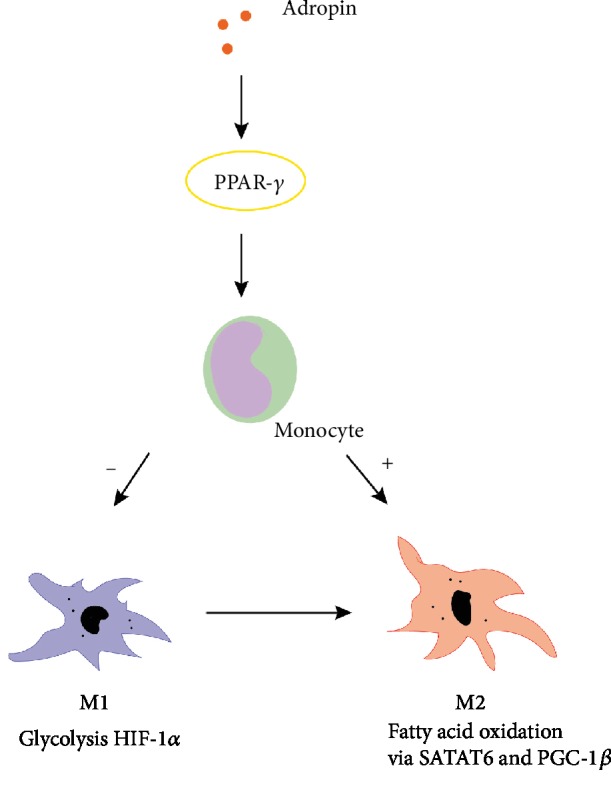Figure 2.

Regulatory mechanisms of adropin for immune cells. M1 macrophages use the energy provided by aerobic glycolysis for proinflammatory responses, while M2 macrophages depend on the energy provided by fatty acid oxidation for anti-inflammatory responses. Adropin regulates macrophage polarization by regulating the expression of PPAR-γ, a gene related to fatty acid metabolism.
